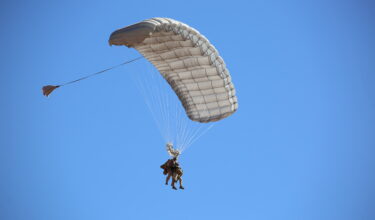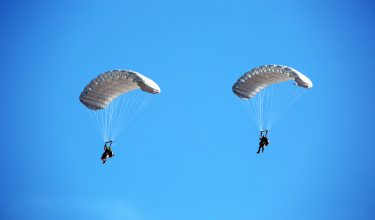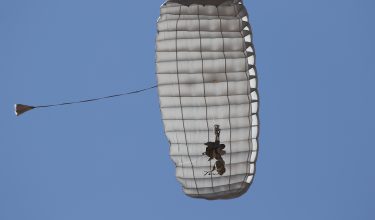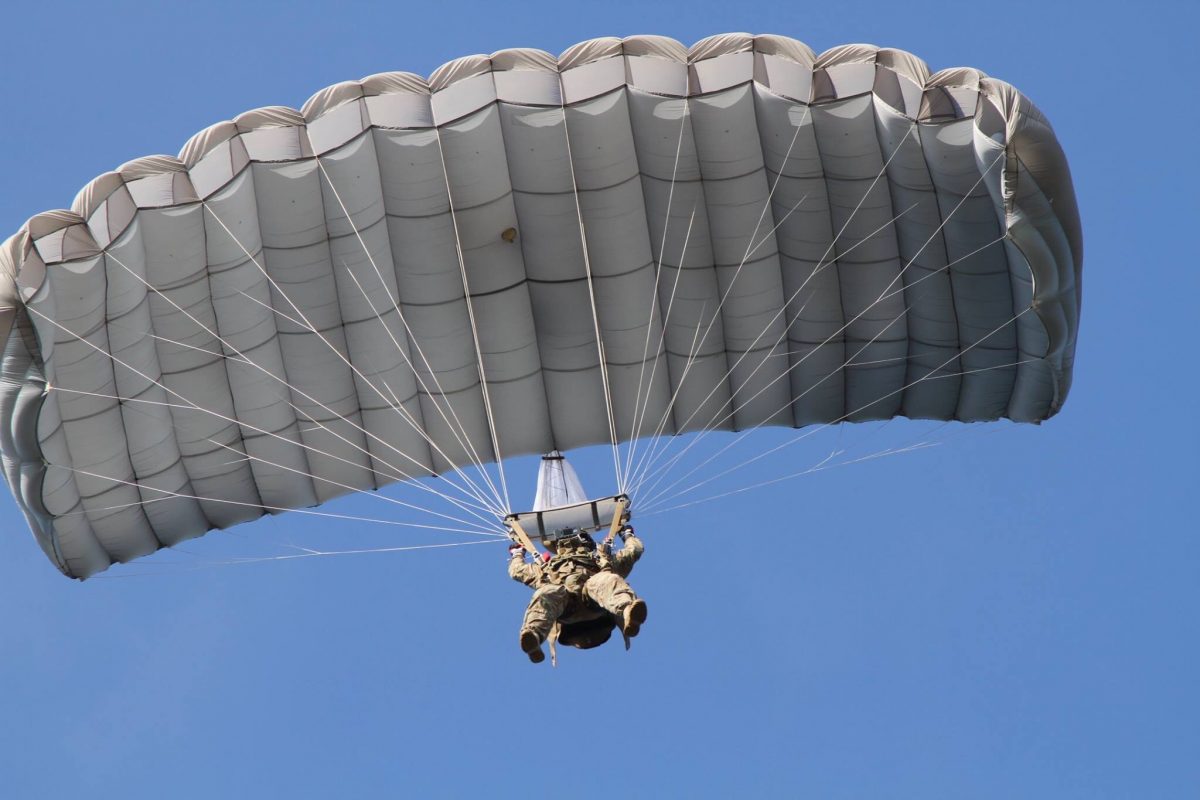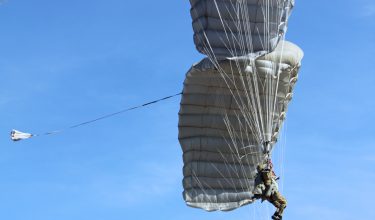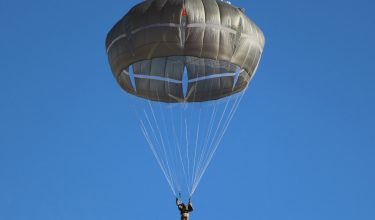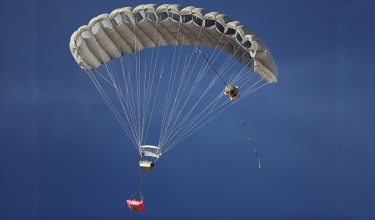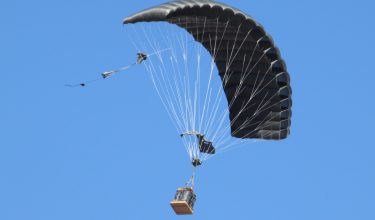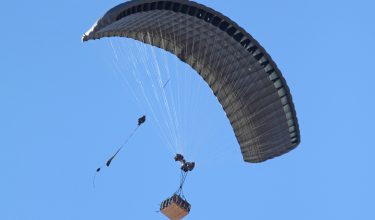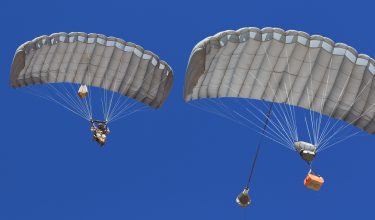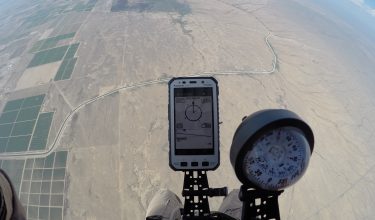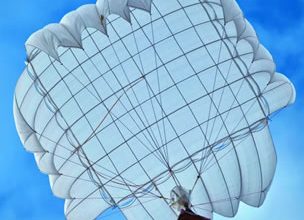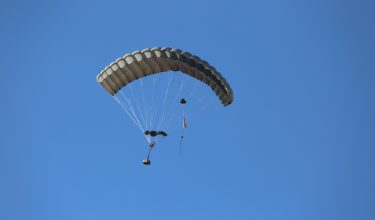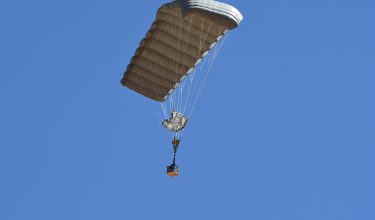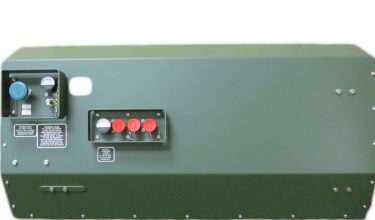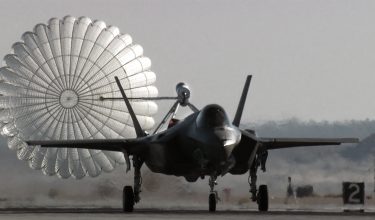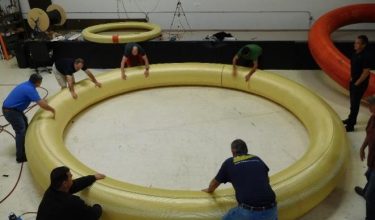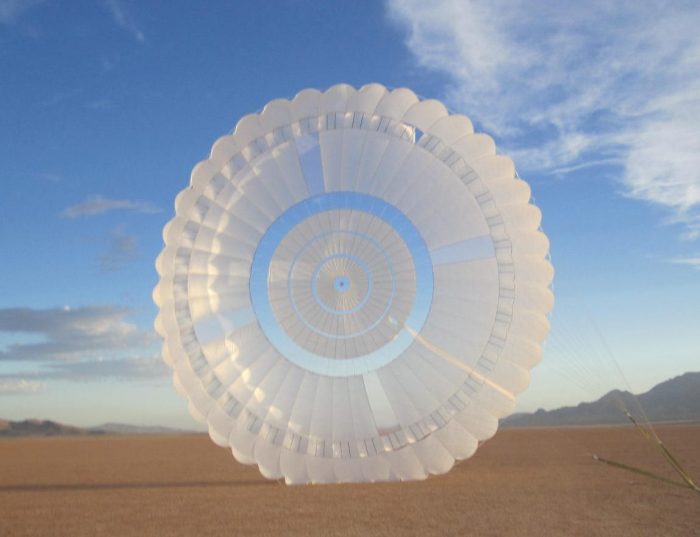Airborne Systems test capabilities are unique in the industry. Airborne Systems engineers are fully versed with all aspects of product testing from seam and joint element testing through highly complex, supersonic wind tunnel testing. Airborne Systems experience and knowledge base ensures that tests are conducted with the precision required to validate product performance to federal standards. Test capabilities include:
Tensile Test
Airborne Systems computer controlled tensile test machines are capable of testing the lightest sewing threads up to the highest tensile elements. This test capability is also used for parachute seam and joint testing to validate and verify assumptions made in our Design Analysis process.
Flight Testing & Qualification of Parachute Systems
Airborne Systems flight testing and parachute system qualification is unsurpassed in the industry. Airborne Systems engineers regularly design and conduct parachute flight tests with payloads ranging from 2 lb up to 7,500 lb in weight. Airborne Systems can configure any required weight or mass property. Airborne Systems test equipment includes programmer parachutes, time delay cutters and electronic sequencers that enable Space and Recovery Systems engineers to conduct testing at the highest fidelity possible. Airborne Systems experienced team conducts all aspects of aircraft drop testing including drop zone control, load masters and test jumpers. Airborne Systems also has proven experience working with a number of government agencies in the design and execution of drop tests with payloads up to 42,000 lb in weight.
Airborne Systems maintains dedicated test and drop facilities in several locations to accommodate and respond to various customer requirements. Typical test measurements include video, photo and on board instrumentation (loads, pressure, altitude, acceleration and GPS). Design enhancements and modifications are made on site as part of Airborne Systems continuing product development. Rigging and packing tables are also on site to facilitate training and the development of procedures. Several delivery aircraft are available for parachute testing including Twin Otter, Skyvan, B-25, C-123 and L-39. Test vehicles with a wide range of payloads are available and utilized as part of the parachute test and qualification. Depending on requirements, several drop zones are available with locations in Eloy, Yuma, and Kingman Arizona and Lake Elsinore, California.
Airbag Drop Testing
Space and Recovery Systems engineers are expert in scaled and full-scale testing of airbag landing systems. Local drop test facilities are available for testing of scaled and full scale vehicle models to 7500 lb depending on vehicle geometry. Other facilities are available for larger size and weight vehicles up to and including 50,000 to 60,000 lb weight class and full scale spacecraft/aircraft geometry.
Airborne Systems engineers are fully versed in the scaling of test results and relevant scaling laws. Airborne Systems has published detailed comparisons between scaled testing and full scale simulation.
Water Landing Systems Testing
Airborne Systems is expert in the testing of water landing systems, including direct entry and airbag landing attenuation for water landing. Space and Recovery Systems engineers are fully conversant in requirements for full scale testing and the application of sub-scale testing for both water entry and post landing flotation and stability.
Environmental Testing
Airborne Systems conducts a full range of environmental testing of components and recovery systems. Qualification tests include:
- Vibration and Shock
- Thermal
- Vacuum
- Thermal/Vacuum
- EMI/EMC
- Explosive Atmosphere
- Sand and Dust
- Salt Fog
- Rain Environment
- Impact Testing
Acceptance Testing
Space and Recovery Systems engineers are fully versed in the development and execution of acceptance tests for a specific component or part. Tests are developed and reviewed with the customer during program execution. Equally important, the procedures and test articles are typically maintained and updated over the life of the product. A new product that requires additional tests typically results in an update to the acceptance test, resulting in further observation of that product feature for future years.
Installation Testing
As required, Airborne Systems provides detailed installation and checkout procedures. These are often finalized in the field as Airborne Systems engineers complete equipment installation on the aircraft or system. Recovery system installation, checkout procedures, and detailed packing instructions are completed with the operator technicians during a hands-on training process.
Out year support, including an “Aircraft On Ground” class response is available for customers that require that level of support.
Wind Tunnel Testing
Airborne Systems engineers design and operate a wide range of wind tunnel tests ranging from low speed to full size tests in the NASA Ames tunnel through supersonic scale model testing in the AEDC Transonic Tunnel.
Data Collection
Airborne Systems employs the finest data collection and analysis tools. Airborne Systems test vehicles are typically instrumented with field computers collecting multiple channels of data with rates up to 5,000 Hz or higher. A typical instrumented drop will measure 3 axis accelerations, riser loads, pilot/static pressure, vehicle inclination and GPS position and velocity. The drop also includes an on board camera to film deployment events. Data collected is typically available for review within two hours of the test.

